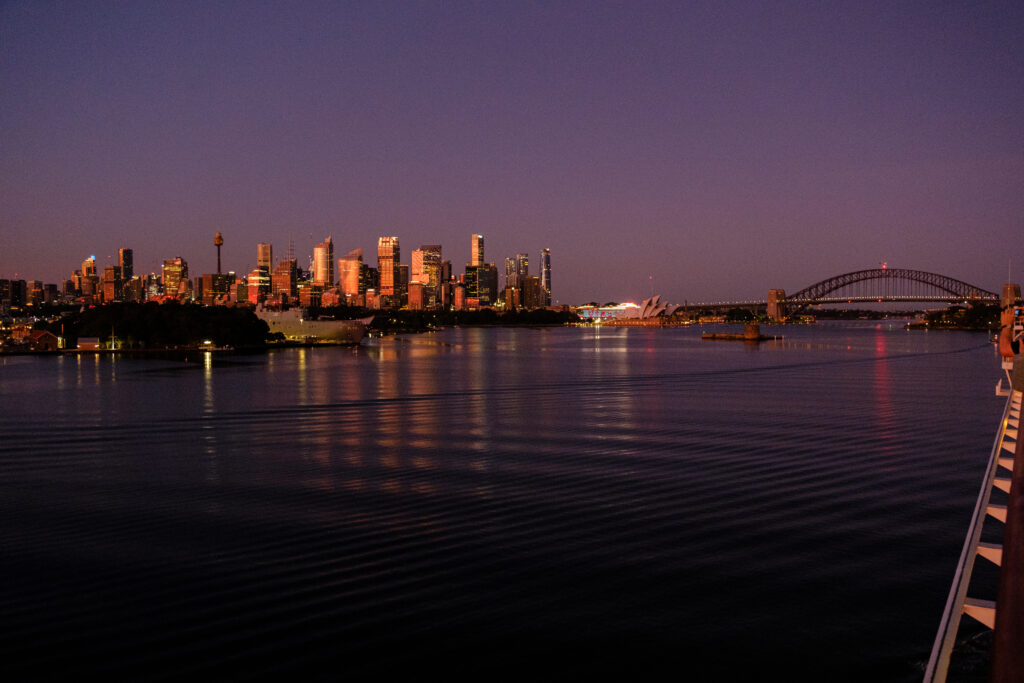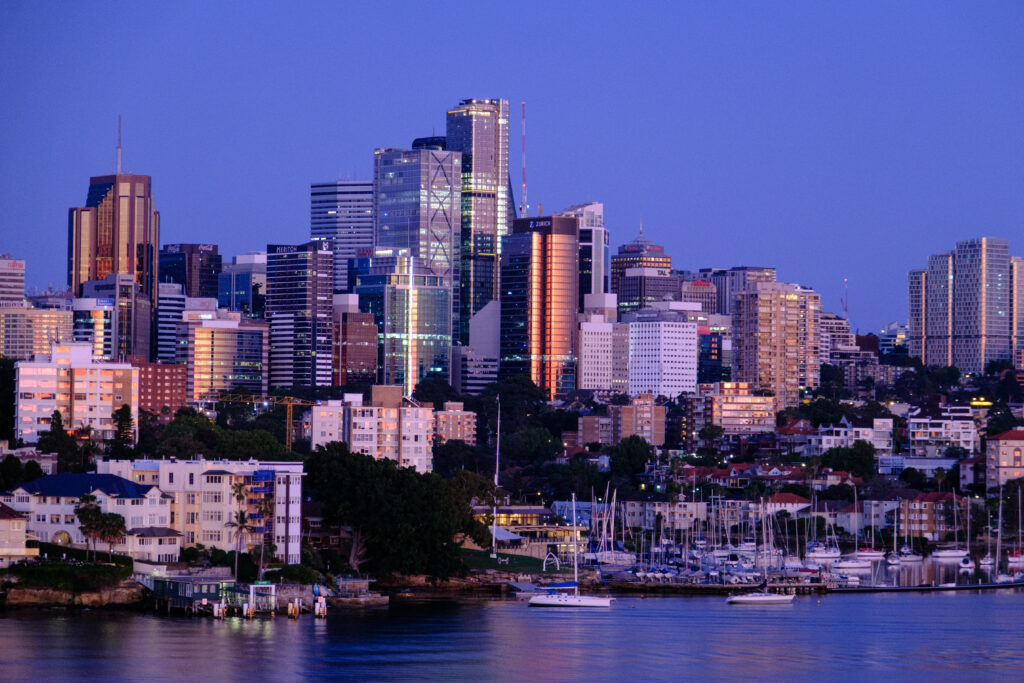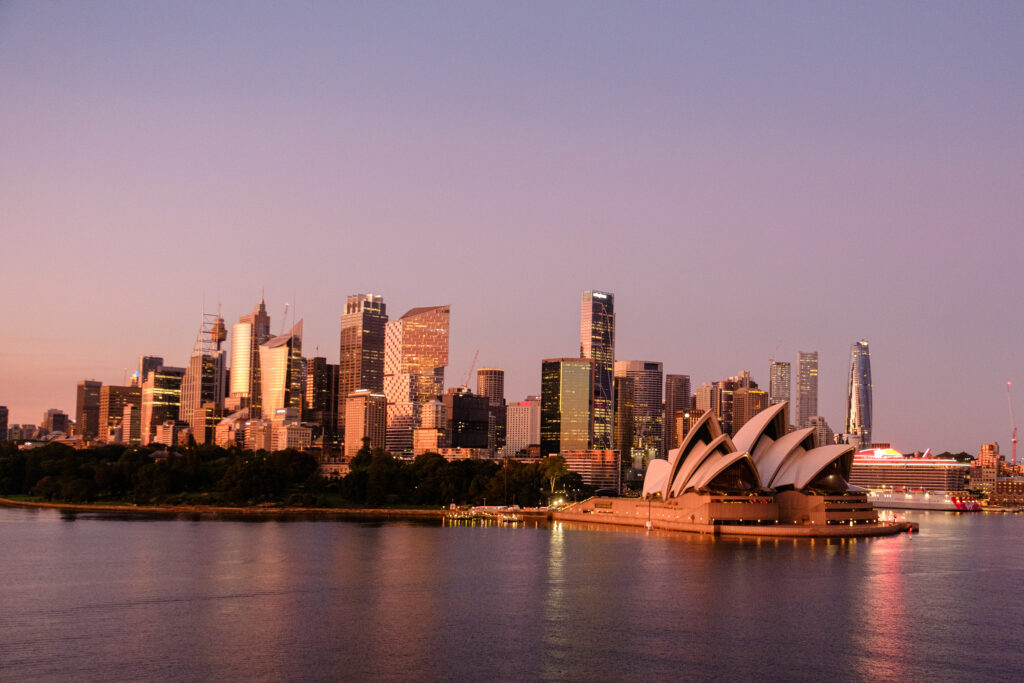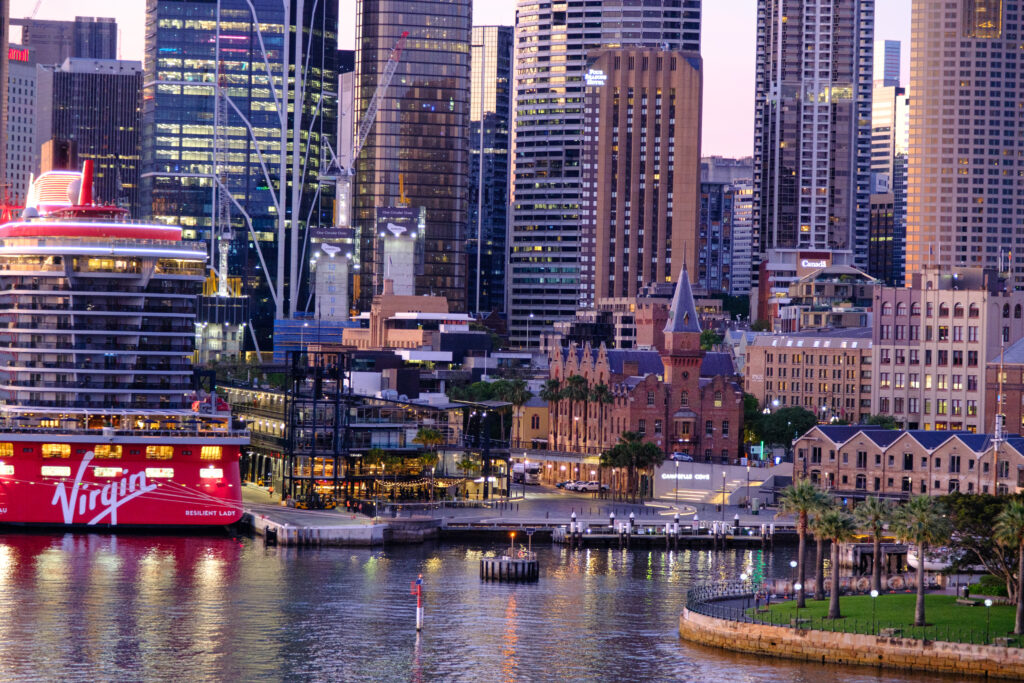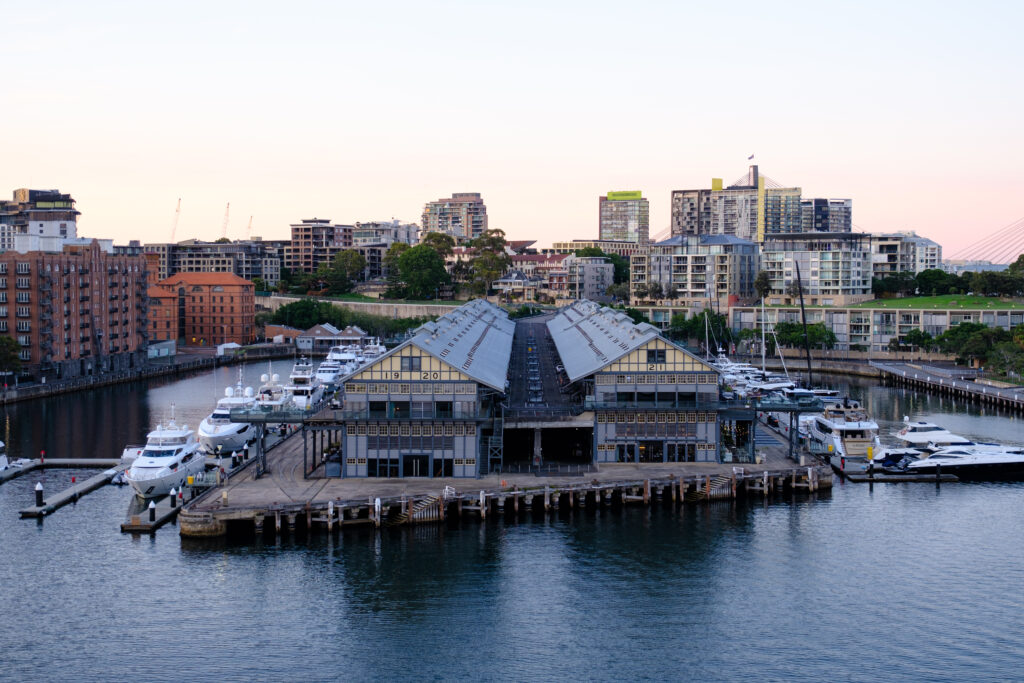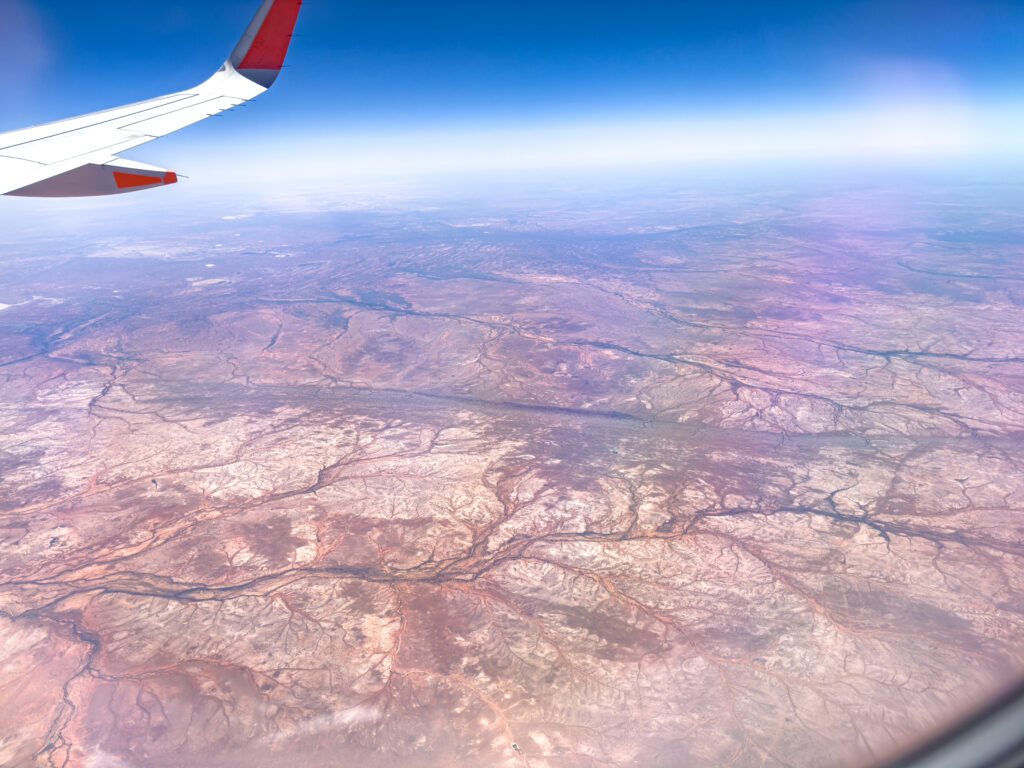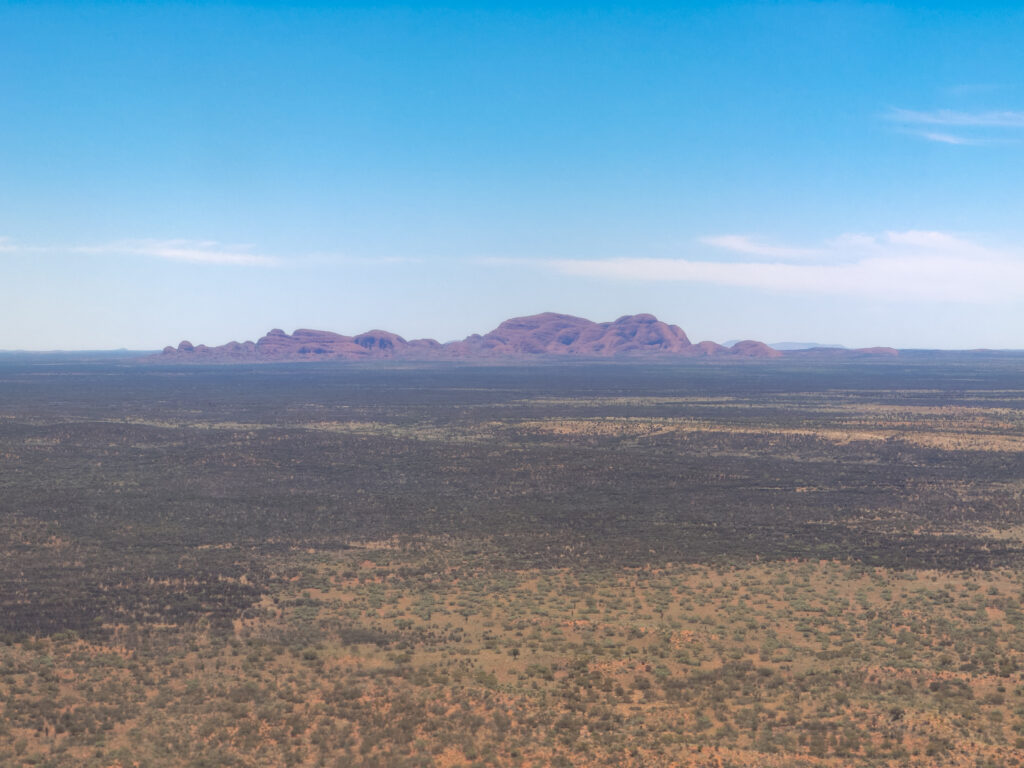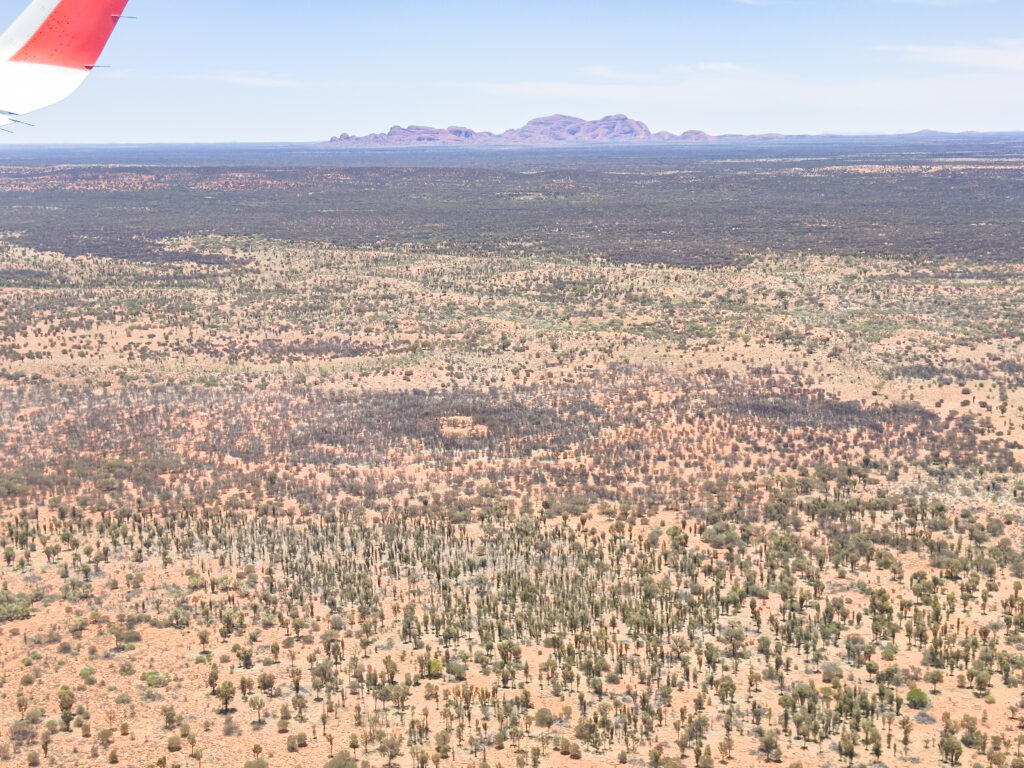The captain of the Orion was correct. Getting up to see our entrance into Sydney Harbor was worth it, especially considering that our arrival coincided with sunrise. You can look at the pictures to see what I mean.
By the way, our hotel when we return to Sydney in a week is right behind the big cruise ship moored at the Circular Quay.
The trip from the pier to the airport gave us a good, long glimpse of Sydney traffic. The route took us through mostly residential neighborhoods and some industrial areas. Our driver told us that no one can afford to live in the Central Business District. Everyone lives in the ‘burbs.
The airport is located on Botany Bay. That’s the location that Captain Phillips, commander of the squadron of 11 ships that transported the first convicts from England to New South Whales first landed. Contrary to the report from Captain Cook some eighty years prior, Phillips decided Botany Bay lacked the water and good soil needed to establish a colony. He is reported to have said, “Airport? Maybe someday. I’m taking the boys and girls to Sydney to live.”
The three-hour flight to Uluru was pleasant enough. Viking had put $15 in our onboard accounts, so we had quiches and a drink for lunch. We landed around 12:30 and went by bus to the Sails in the Desert hotel in the town of Yulara. We’re back in the Northern Territory, almost due south of Darwin. That means the time fell back 1.5 hours. The town itself consists of a huge traffic roundabout of perhaps a mile or two, encircling a large sand dune. Several hotels and a shopping area, the Town Square, are located on the periphery of the circle. Our five-star hotel has a pool and two restaurants.
Our rooms weren’t available until 3 PM so Judy and I walked down the road to the Town Square. Only problem: it was 104 degrees so the going was a bit tough. A couple from Arizona on our trip said, “What’s your problem? We have weather like this all the time.” Being the frugal types we are, we limited ourselves to the purchase of only two shirts each plus milk shakes. Hey, it’s supporting aboriginal communities, right?
The Ayers Rock Resort at Yulara owns and operates all of the businesses on the loop, including our hotel. It is owned and operated by Voyages Indigenous Tourism Australia, which in turn is owned by the Indigenous Land and Sea Corporation (ILSC). In other words, the Ayers Rock Resort does directly benefit the Anangu community, the local indigenous group here.
Ayers Rock Resort is the jumping off point for visitors to the Uluru-Kata Tjuta National Park where the iconic Uluru mountain is located.
The park itself is something of a success story for the Anangu people. When tourism started to take off in the 1960s, some tour operators pressured the government to remove Anangu people from the park entirely. This wrong was not righted until October 26, 1985, when the government returned ownership of the national park to the Anangu people. In return, the Anangu gave the government a 99-year lease to operate the park. Today, the park is jointly managed by the government and the Anangu. It is a UNESCO World Heritage Site, one of only four in the world jointly managed in this manner.
Because of the extreme heat, we had no activities until 7 PM. Judy and I did use that time for the aforementioned shopping spree, a dip in the swimming pool (cool and refreshing), finishing a blog post and of course a nap.
We were then driven to the park for an Australian-style barbecue. The meal was served outside, which was great since the temperature had dropped well below 90 and the flies that pester everyone during daylight hours had disappeared. The food included steak, chicken and kangaroo. Tastes just like you-know-what.
After dinner, we were treated to an astronomy lecture by a knowledgeable member of the tour group staff. I won’t bore you with all the constellations he identified (as if I could remember them all anyway). The one distinctive constellation was Orion, familiar to us all. The only difference is that Orion is pretty much upside down compared to what we see in the Northern Hemisphere. I’ve drawn a crude Orion on the picture so you can see what I mean. The Man in the Moon is similarly rotated from our accustomed view.
Tomorrow we’re going to get serious about seeing Uluru and the park.


